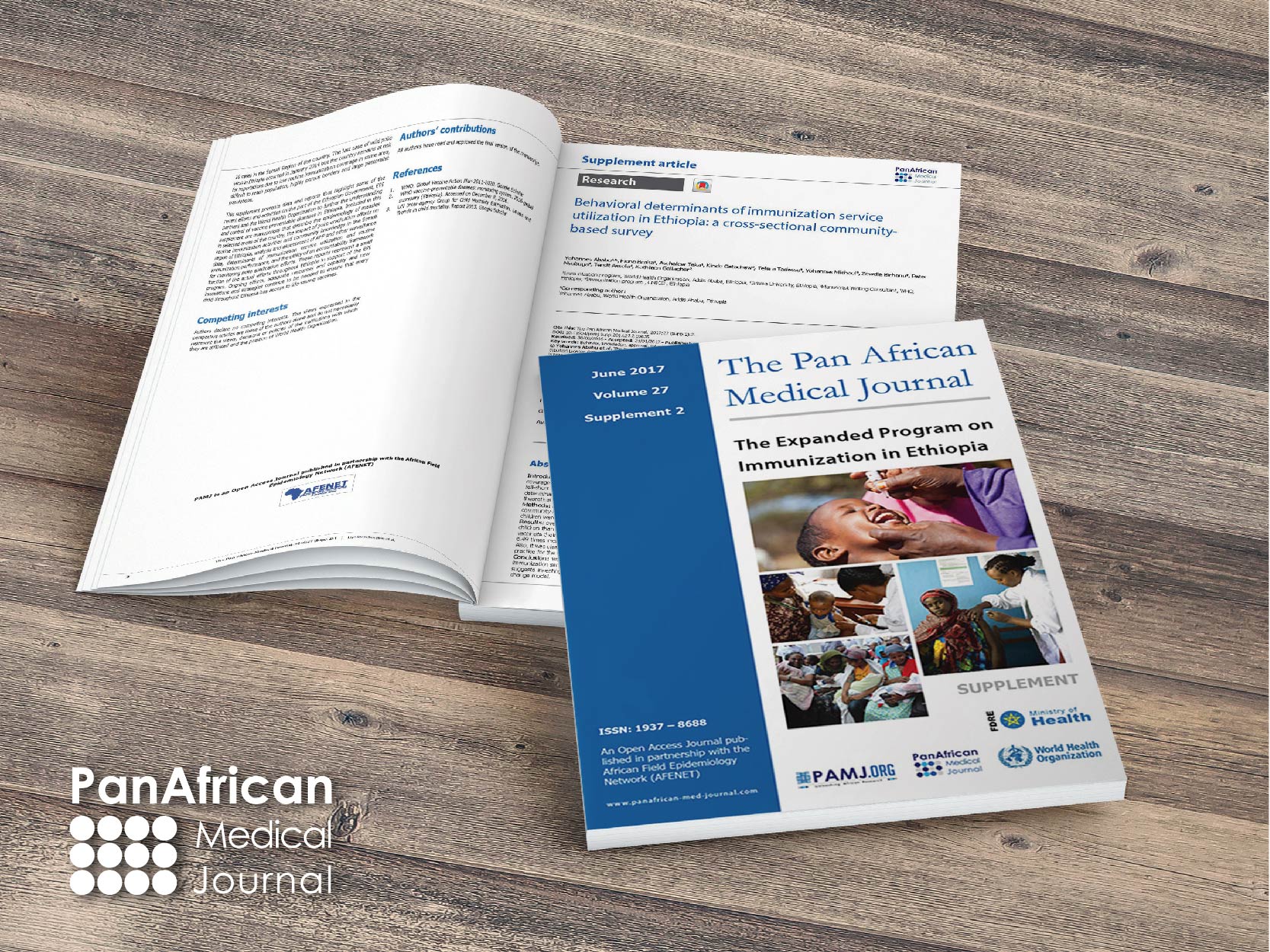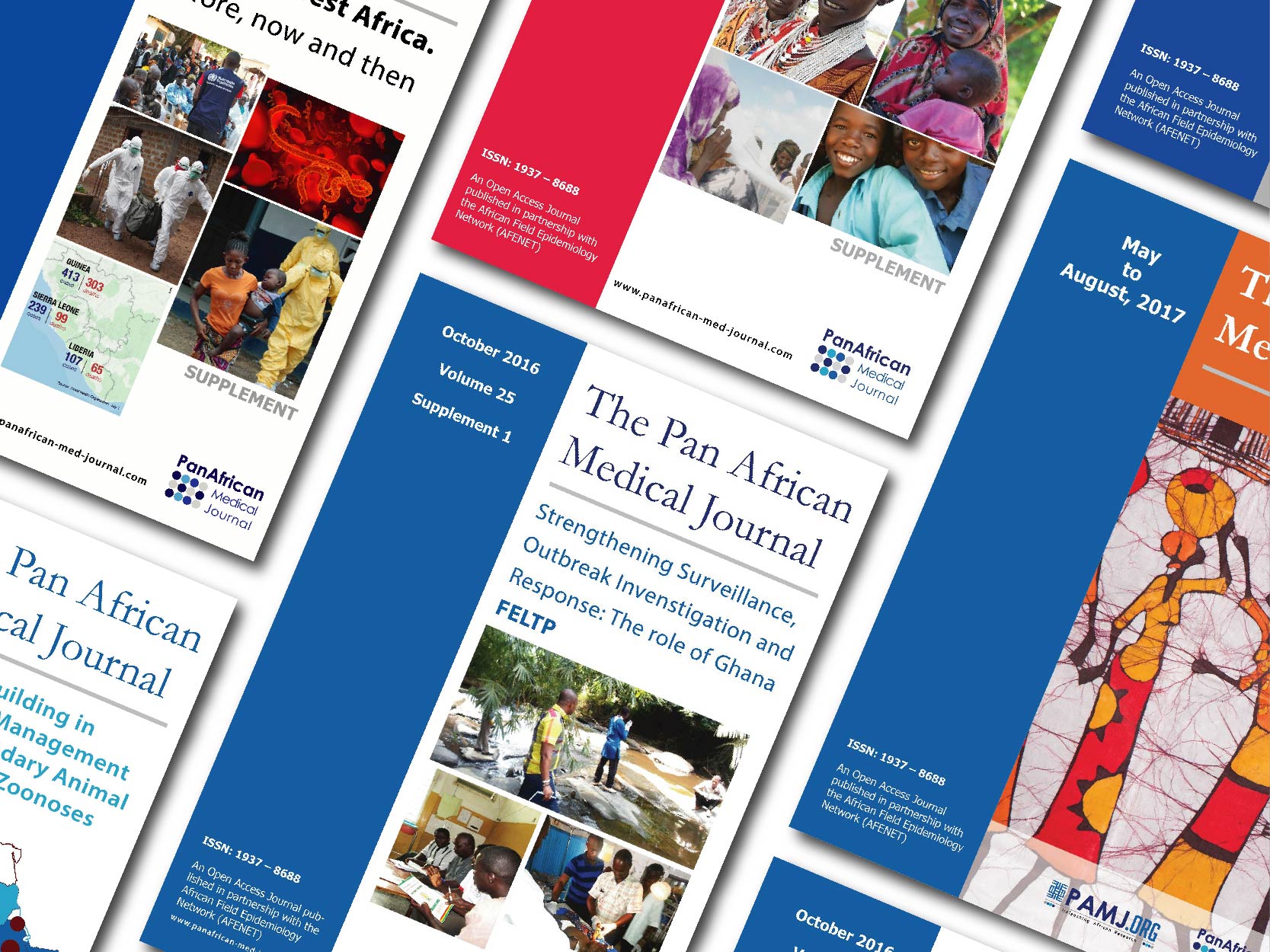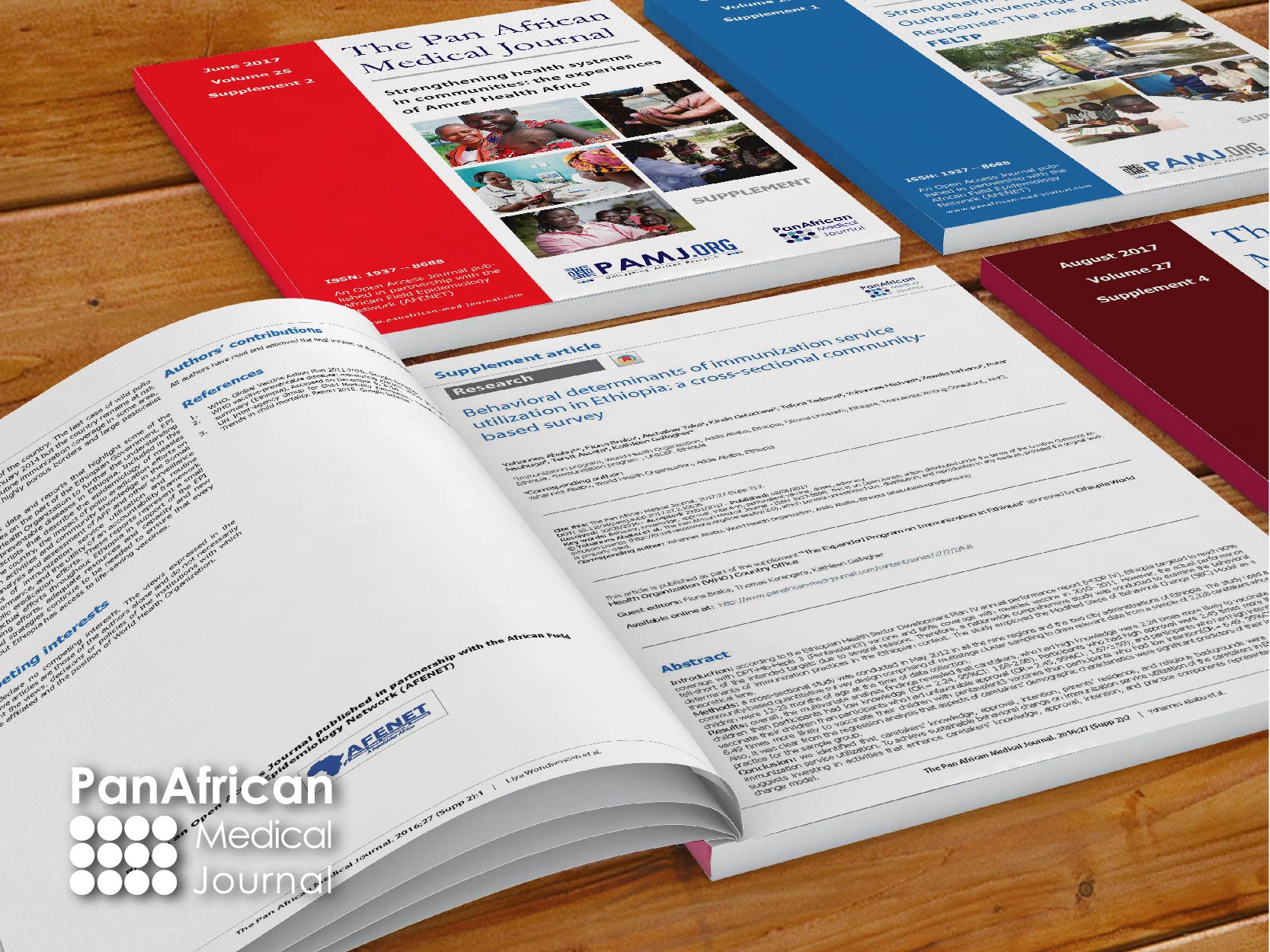Conference abstract
Vitamin D, parathyroid hormone, insulin sensitivity, and Islet β-cell secretory function in diabetic patients from south Kivu in the Democratic Republic of Congo: a cross-sectional study
Pan African Medical Journal - Conference Proceedings. 2024:22(63).25
Nov 2024.
doi: 10.11604/pamj-cp.2024.22.63.2433
Archived on: 25 Nov 2024
Contact the corresponding author
Keywords: Vitamin D, parathyroid hormone, diabetes mellitus, insulin resistance, South Kivu
Poster
Vitamin D, parathyroid hormone, insulin sensitivity, and Islet β-cell secretory function in diabetic patients from south Kivu in the Democratic Republic of Congo: a cross-sectional study
Dieudonne Masemo Bihehe1, Ahadi Bwihangane1,2, Jean-Paulin Mukonkole Mbo3, Michel Hermans4, Philippe Bianga Katchunga4,&
1Faculté de Médecine, Hôpital Général de Référence de Panzi, Université Evangélique en Afrique, Bukavu, Congo, 2Département de Médecine interne, Université de Kisangani, Province Orientale, RD Congo, 3Service d´endocrinologie et de Diabétologie, Cliniques Universitaires Saint-Luc, Université Catholique de Louvain, Bruxelles, Belgique, 4Département de Médecine Interne, Cliniques Universitaires de Bukavu, Université Officielle de Bukavu, Bukavu, Congo
&Corresponding author
Introduction: the role of vitamin D and parathyroid hormone in the metabolic profile of type 2 diabetes mellitus in sub-Saharan Africa has not been adequately assessed. This study aimed to determine the prevalence of low vitamin D level and secondary hyperparathyroidism and their association with insulin sensitivity and β-cell secretory function among Congolese type 2 diabetics.
Methods: fasting glycaemia, fasting insulin, 25OH D3, and human parathyroid hormone (hPTH) were measured in one hundred and eighty-four type 2 diabetic patients followed as outpatients in South Kivu. Levels of 25OH D3 < 30 ng/ml and hPTH > 65 pg/ml defined low vitamin D and elevated parathyroid hormone levels, respectively. The HOMA model was used to measure insulin sensitivity and β-cell secretory function.
Results: medians (IQR) were 25.3 (20.4 - 32.4) ng/ml for 25OH D3 and 53.7 (38.4 - 115.7) pg/ml for hPTH. 58.7% of diabetics had insulin resistance, 126 (68.5%) had low vitamin D and 80 (43.5%) had hyperparathyroidism. In multivariate analysis, hPTH (partial r = −0.28; p = 0.0002) and 25OH D3 (partial r = 0.16; p = 0.03) showed an independent association with insulin sensitivity after adjustment for body mass index and waist circumference. Finally, hPTH (partial r = 0.27; p = 0.0002) was the sole determinant of β-cell secretory function.
Conclusion: this study confirms the high prevalence of low vitamin D level and secondary hyperparathyroidism and their association with insulin resistance and impaired islet β-cell secretory function among Congolese with type 2 diabetes. Vitamin D and calcium supplementation should be envisaged for deficiency cases in this region.
Vitamin D, parathyroid hormone, insulin sensitivity, and Islet β-cell secretory function in diabetic patients from south Kivu in the Democratic Republic of Congo: a cross-sectional study
Dieudonne Masemo Bihehe1, Ahadi Bwihangane1,2, Jean-Paulin Mukonkole Mbo3, Michel Hermans4, Philippe Bianga Katchunga4,&
1Faculté de Médecine, Hôpital Général de Référence de Panzi, Université Evangélique en Afrique, Bukavu, Congo, 2Département de Médecine interne, Université de Kisangani, Province Orientale, RD Congo, 3Service d´endocrinologie et de Diabétologie, Cliniques Universitaires Saint-Luc, Université Catholique de Louvain, Bruxelles, Belgique, 4Département de Médecine Interne, Cliniques Universitaires de Bukavu, Université Officielle de Bukavu, Bukavu, Congo
&Corresponding author
Introduction: the role of vitamin D and parathyroid hormone in the metabolic profile of type 2 diabetes mellitus in sub-Saharan Africa has not been adequately assessed. This study aimed to determine the prevalence of low vitamin D level and secondary hyperparathyroidism and their association with insulin sensitivity and β-cell secretory function among Congolese type 2 diabetics.
Methods: fasting glycaemia, fasting insulin, 25OH D3, and human parathyroid hormone (hPTH) were measured in one hundred and eighty-four type 2 diabetic patients followed as outpatients in South Kivu. Levels of 25OH D3 < 30 ng/ml and hPTH > 65 pg/ml defined low vitamin D and elevated parathyroid hormone levels, respectively. The HOMA model was used to measure insulin sensitivity and β-cell secretory function.
Results: medians (IQR) were 25.3 (20.4 - 32.4) ng/ml for 25OH D3 and 53.7 (38.4 - 115.7) pg/ml for hPTH. 58.7% of diabetics had insulin resistance, 126 (68.5%) had low vitamin D and 80 (43.5%) had hyperparathyroidism. In multivariate analysis, hPTH (partial r = −0.28; p = 0.0002) and 25OH D3 (partial r = 0.16; p = 0.03) showed an independent association with insulin sensitivity after adjustment for body mass index and waist circumference. Finally, hPTH (partial r = 0.27; p = 0.0002) was the sole determinant of β-cell secretory function.
Conclusion: this study confirms the high prevalence of low vitamin D level and secondary hyperparathyroidism and their association with insulin resistance and impaired islet β-cell secretory function among Congolese with type 2 diabetes. Vitamin D and calcium supplementation should be envisaged for deficiency cases in this region.








